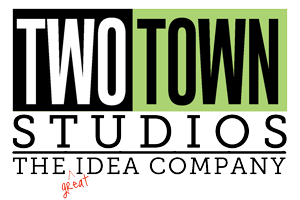Atlanta and some Snippets
After 15 years of wandering her 7 million square feet of showrooms, the Atlanta Mart has become kinda like that old friend who never changes. That friend you aren’t sure you want to spend time with until they show up, then you immediately drop back into the groove and pick up where you left off last time. At least until you get tired and wish they would go home.
Every time we go hoping to find new and exciting trends, enthusiastic partners and huge opportunities. It does happen – after some markets we have worked and planned all the way home, flush with exciting new options that spark creative fire. Others have been more toward the “meh” side of the spectrum. Like this one. It was quiet this year, sometimes eerily so. On occasion you could look down a hallway and there was nobody in sight. For a hundred yards. Empty elevators and bathrooms, extra free lunches being tossed, and room to move at cash and carry. Our clients were taking the “it’s slow but steady” reporting path, but of course they have to keep the faith. I have been there enough times that I’m not buying it. But that’s just me. Hopefully they had a big weekend.
Millions of square feet but not much in the way of new and noteworthy. Loads of shiny stuff, metallics, bling accessories and of course lots of apparel in the gift showrooms. Camo is mostly gone, chalkboard greatly reduced, but words are still everywhere. Farm to table and country designs are staples. We did see simple primary colors showing up on garden and outdoor products, that was interesting. The handcrafted look is definitely taking front stage now. Real or ersatz cut and paste, stitchery, block printing, found objects, raw wood and rustic signs – the maker movement has come to production product. Hmm, how do you balance that?
The Snippets, however, were flying about as usual. Most are from this market and a couple from conversations and meetings over the last few weeks:
“I keep telling him ‘I love it but I can’t make money off it’”. – company VP about a concept that keeps getting presented
“There’s so much good art out there now that unless your art is stupendous – it’s just more art.” – an agent
“It’s the if’s, that’s how Surtex sucks you in: if you get one decent deal, or if something good happens, or if you won’t know for six months, or if this year it will be better…a lot of if’s for that kind of money.” –an artist who doesn’t do Surtex anymore
“Where there used to be 100 suppliers now there are 1000. Literally. We’re working in a very different world.” – a salesman talking about placing products
“They’re all so desperate to license something that they don’t realize the value of just playing around with an idea until something good pops up. It usually takes a few tries before it’s right for anybody.”
– an agent talking about their artists
“What’s coming next is the ‘scanning model’, where no one gets paid until the product scans out at the retailer point of sale. Some companies, like Cracker Barrel, are already doing it.” – a sales mgr
“People who are fast on their feet and can do customized development for the client, they will be OK. The rest, well….” – a rep talking about licensed product
“He represents a big customer so we have to work with him, but no one can stand it because he has no enthusiasm for the business.” – an art director about a sales rep
“There’s a certain fatigue that comes with trying to push that same rock up that same hill over the years.”
– a successful licensed artist
“We don’t look at portfolios anymore. They have to send it to us, or have an online site we can look through, or we pass.” – the owner of a stationery company
“We have worked with this factory for years, and our lead time was always 30 days. Then it went to 60 days, then it went to 90 days, and now they tell me they need the new designs 120 days ahead of production. All in two years. Sorry to rush it but we need these to them by August.” – gift company owner re: additional product designs…mid-July…
“It’s not about having the most SKUs, it’s about having the most relevant SKUs.” – a sales manager re: recent restructuring
“We show them (a mass retailer) the art, but we don’t want to show them unique formats because they are closely aligned with {a big China factory}, and they just knock everything off.” – from a gift company
“Resin products aren’t doing well so we are only producing the top sellers, no extras or add-ons, while we move in other directions.” – a gift company owner
“They insist tomorrow will be another day like today. They don’t want to think about what these showrooms will look like five years from now. It’s a problem.” – sales manager about the company owners
“This place has turned into an accessories and fashion market.” – from a gift company
“You generally have to kill someone to get on an elevator – this morning I could walk right on. Where are they?”
– a rep in a hallway
“There is so much flat art out there, to get my attention they need to think in product format.” – an art director
“Good things will come from any show. Just putting yourself in the middle of the action generates results.”
– an agent about doing shows and markets
And my favorite:
“Mock this up. We have to present our ideas to four people who cannot visualize anything unless it’s a mocked up product. And they are in the gift business—go figure.” – an art director


